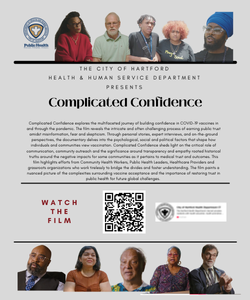Social Justice
By Justice Rivera
By embracing harm reduction principles, our culture can collectively empower and protect sex workers.
For decades, people in the sex trade have been raising awareness about the harmful effects of criminalization on their livelihoods and well-being. Their demands have largely remained the same: Sex workers want safe working conditions, the decriminalization of their work, and an environment that allows them to address violence and exploitation when it happens.
Unfortunately, the rampant criminalization of sex workers and their clients has remained a barrier to these basic human rights. However, Body Autonomy: Decolonizing Sex Work and Drug Use, an anthology that I edited, suggests an immediate step: Bolster harm reduction within the sex trade to arm sex workers with the knowledge and resources necessary to prevent and respond to violence and exploitation within their work and personal lives.
As I write in the book, harm reduction is “the understanding that shame is not a productive agent of change, and robbing people of resources only decreases their chances of survival.” Sometimes, harm reduction can include providing safety supplies, such as condoms, lube, sanitizer, boric acid, and bad date lists. Other times, harm reduction can include safety planning and ensuring there’s community accountability and room for self-care. Harm reduction can also include broad access to low-income and affordable housing, safe drug-consumption spaces, and rights-based policy reforms. Harm reduction is a “blueprint for survival and the belief in something beyond survival,” I write. “‘Just say no’ isn’t as effective as ‘What do you need to be OK?’”
Currently, the war on sex trafficking is the dominant sociopolitical approach to the sex trade in the United States. Most local, state, and federal anti-trafficking laws conflate consensual sex work with sex trafficking, thereby pushing sex work underground, where trafficking, violence, and STI transmission are actually more likely to occur. Most everything the mainstream media tells us about sex trafficking is twisted and sensationalized, including the number of people being trafficked. When social services count consensual sex workers as sex trafficking survivors, it skews the data, further stigmatizing sex workers and endangering those who are victims of trafficking.
In contrast, consent, self-agency, and sex worker leadership are central to harm reduction.
Harm-reduction programs that center sex workers—including SPARC Women’s Center in Baltimore; G.L.I.T.S, a Black trans-led advocacy organization in New York City; and Aileen’s, a peer-centered organizing and hospitality space for sex workers in Seattle—offer individualized care and classes that help sex workers navigate police harassment and other forms of state violence. These organizations also offer occupational health and safety supplies; meet sex workers where they are, whether on the street or online; and provide peer support free of shame, stigma, and sensationalism. In these programs, sex-trafficking survivors self-identify as such and are connected to additional services as requested.
Body Autonomy illustrates the ways in which sexuality and sexual labor have been colonized and weaponized against women, femmes, and queer and trans people of color. It includes antidotes from healers of the global majority that encourage us all to reclaim the sanctity of our bodies and our bodily autonomy. “If everyone on Earth felt fulfilled, healed, whole … or at least knew how to access a platform for healing … the world would be a different place,” Melodie Garcia, an erotic service provider, harm reductionist, and writer, says in her piece in Body Autonomy. “It is absolutely true that people can find this through sex, kink, art, and drugs.”
The truth is marginalized sex workers, including sex workers of color, transgender sex workers, undocumented sex workers, and sex workers with disabilities, experience the most harm in the sex trade, from criminalization to sex trafficking. When policies and social services are designed with these populations, who are the most marginalized, in mind, everybody benefits.
As the consensual sex workers I worked with for Body Autonomy affirm, sex work is work—and it is neither inherently disempowering and exploitative, nor is it inherently empowering and glamorous. Like most work, it can often be a combination of all these characteristics and more. If we as a society can embrace this truth, then we can work toward a world where compassion, care, and collaboration are prioritized.
In order to keep sex workers safe, we must re-learn and re-frame concepts of public safety and public health, uplift compassion, and consider new worlds. Embracing harm reduction can help get us there





